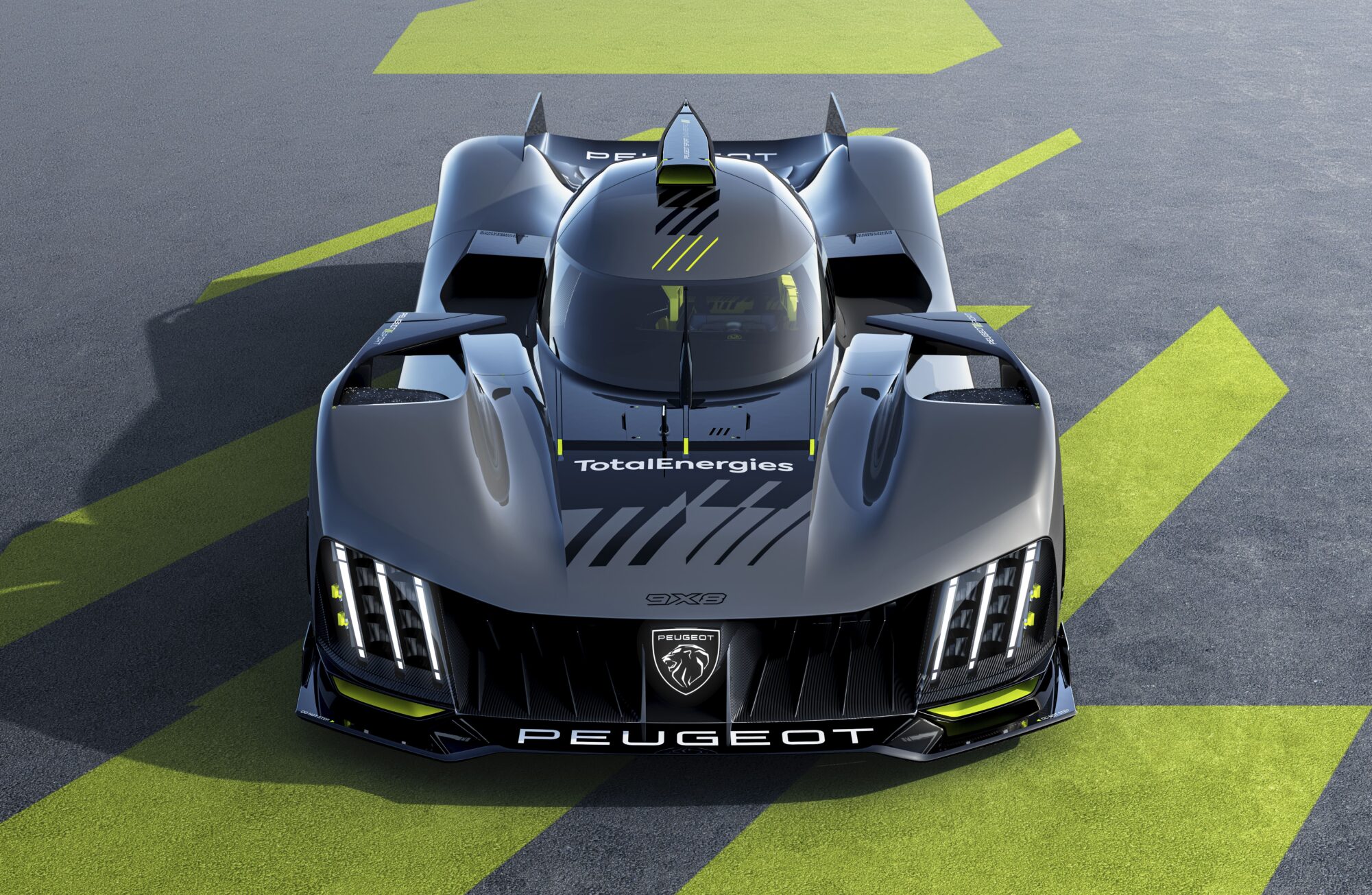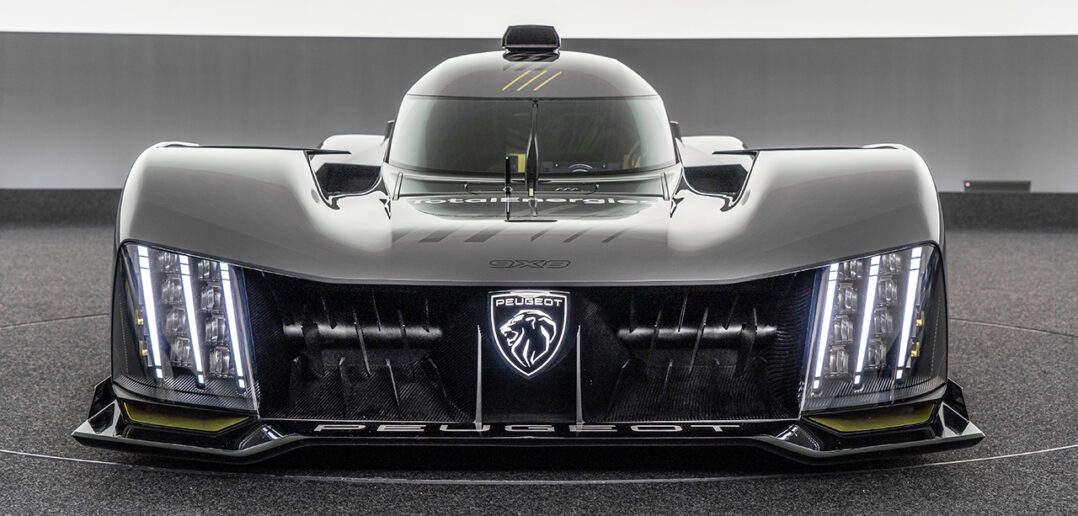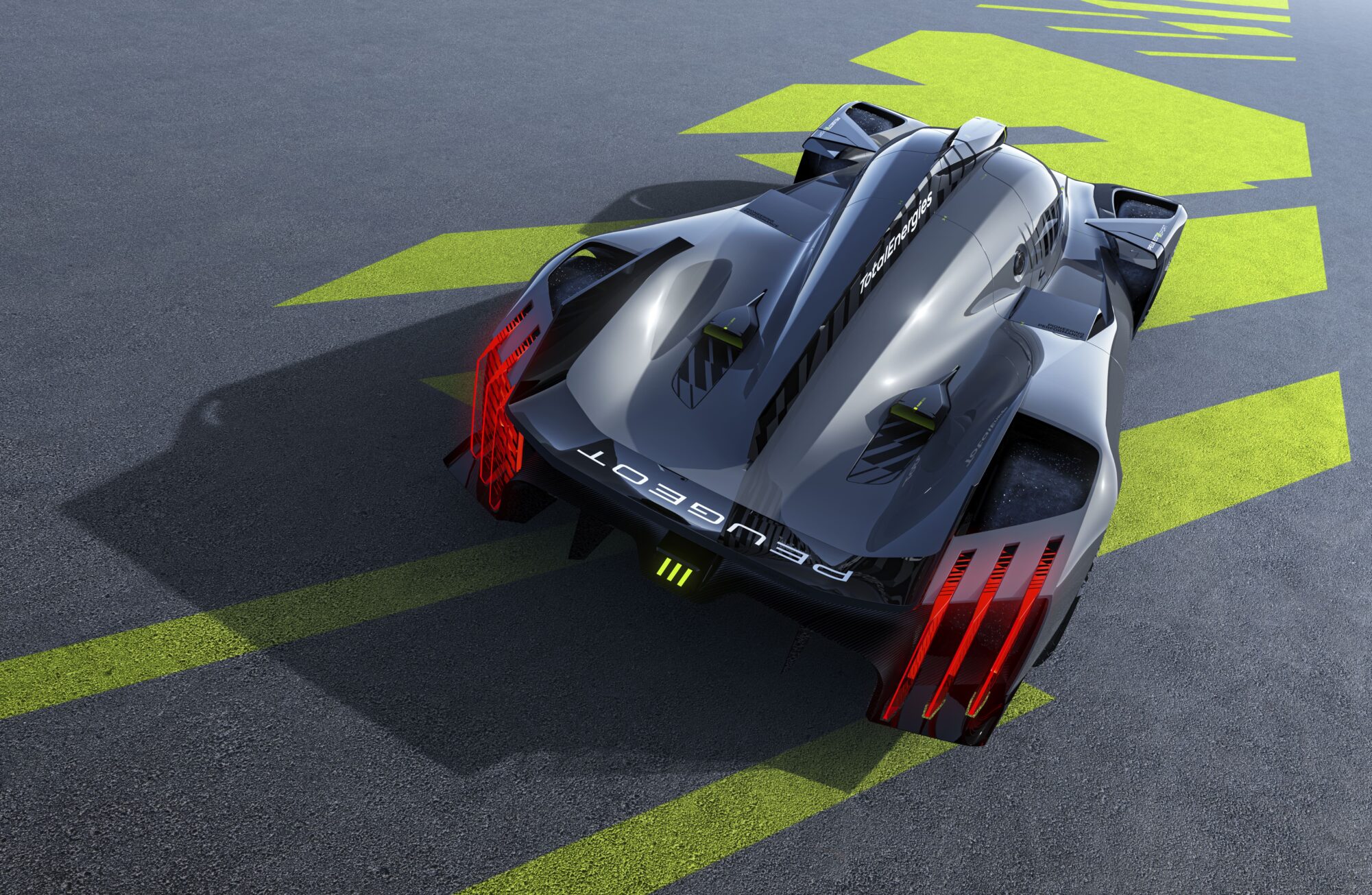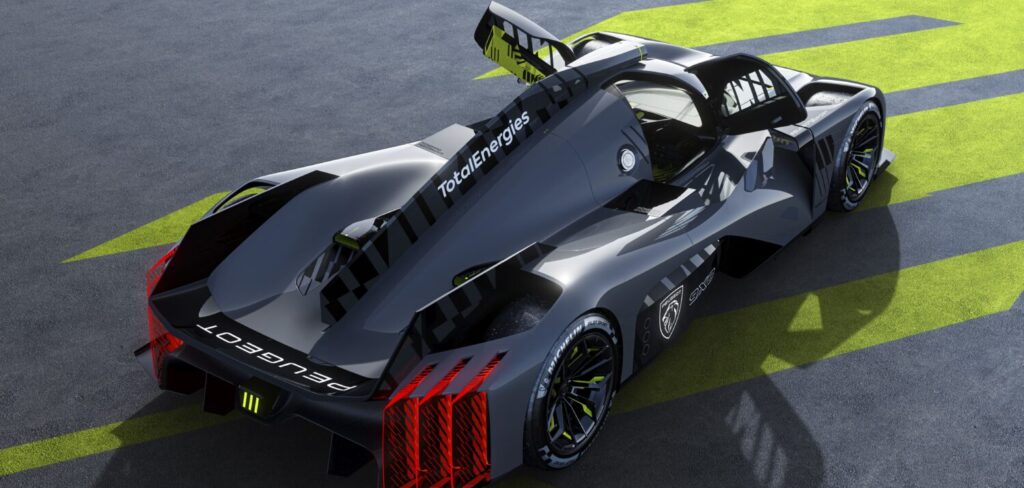Peugeot Sport has released the first images of its Le Mans Hypercar, dubbed the 9X8, which is set to compete its first races in 2022.
Peugeot says that the 9X8 is a brand-driven project, designed in accordance with its Neo-Performance vision which is founded on combining a premium sporting pedigree with styling excellence, efficiency and technological expertise that can be carried over to road cars. To this end, the company has taken advantage of the design freedom afforded by the LMH rules, and there was apparently an unprecedented level of cooperation between Peugeot’s design teams and Peugeot Sport, led by design director Matthias Hossann and WEC program technical director Olivier Jansonnie respectively.
The most striking detail of the new car is the omission of a rear wing. With the regulations limiting the aerodynamic performance of the LMH class, there was always the potential for a manufacturer to reduce reliance on a rear wing to the extent it could be eliminated.
“The absence of a rear wing on the Peugeot 9X8 is a major innovative step,” said Stellantis motorsport director Jean-Marc Finot. “We have achieved a degree of aerodynamic efficiency that allows us to do away with this feature. Don’t ask how, though! We have every intention of keeping that a secret as long as we possibly can!”
 Explaining the reason for a lack of wing further, Jansonnie said, “The new Le Mans Hypercar regulations were drawn up to level out the importance of conventional performance-boosting systems. Designing the 9X8 has been a passionate experience because we had the freedom to invent, innovate and explore off-the-wall ways to optimize the car’s performance, and more especially its aerodynamics. The regulations stipulate that only one adjustable aerodynamic device is permitted, without specifying the rear wing. Our calculation work and simulations revealed that high performance was effectively possible without one.”
Explaining the reason for a lack of wing further, Jansonnie said, “The new Le Mans Hypercar regulations were drawn up to level out the importance of conventional performance-boosting systems. Designing the 9X8 has been a passionate experience because we had the freedom to invent, innovate and explore off-the-wall ways to optimize the car’s performance, and more especially its aerodynamics. The regulations stipulate that only one adjustable aerodynamic device is permitted, without specifying the rear wing. Our calculation work and simulations revealed that high performance was effectively possible without one.”
The majority of the 9X8’s downforce is clearly generated by the underfloor, and looking at the front of the car, the upper surfaces of the underwing feature a host of turning vanes, which would most definitely not have been allowed under LM P1 rules. The side of the car also reveals a sharply cutaway floor rearwards of the cockpit.

The video below, produced by French newspaper L’argus, though in French, provides and interesting look at more details of the showcar produced for the 9X8’s launch.
As Peugeot hoped, the car’s rear-mounted, 2.6-liter, bi-turbo, 500kW (680hp), 90-degree V6 has been bench testing since April. Meanwhile, the front-mounted 200kW motor-generator unit, 7-speed sequential gearbox and battery are in the process of being assembled in line with the team’s bench-testing validation schedule. Additionally, the 900V battery is being codeveloped by Peugeot Sport and Saft, a subsidiary of TotalEnergies.
“Our target with regard to our energy requirements is flawless reliability and perfect control,” added Finot.“Le Mans has become a 24-hour sprint race that can be won or lost by the number of times you pit. The exceptional energy-efficiency of the new Hypercars prefigures what we will see shortly in the world of road cars. This consideration had a fundamental influence on our work on the Peugeot 9X8 package, every aspect of which needsto contribute to achieving hyper efficiency, from its powertrain to its aerodynamics.”
PEUGEOT 9X8 – Technical Data
Class: Le Mans Hypercar (LMH)
Length: 5,000mm
Width: 2,080mm
Height: 1,180mm
Wheelbase: 3,045mm
Powertrain: Peugeot Hybrid4 500KW (all-wheel drive)
Rear-drive train: 500kW (680hp), 2.6L twin-turbo, 90-degree V6 petrol internal combustion engine and 7-speed sequential transmission
Front-drive train: 200kW electric motor-generator and single-speed reducer
Battery: High density, 900V battery co-designed by Peugeot Sport, TotalEnergies/Saft
Fuel and lubricants: TotalEnergies.



